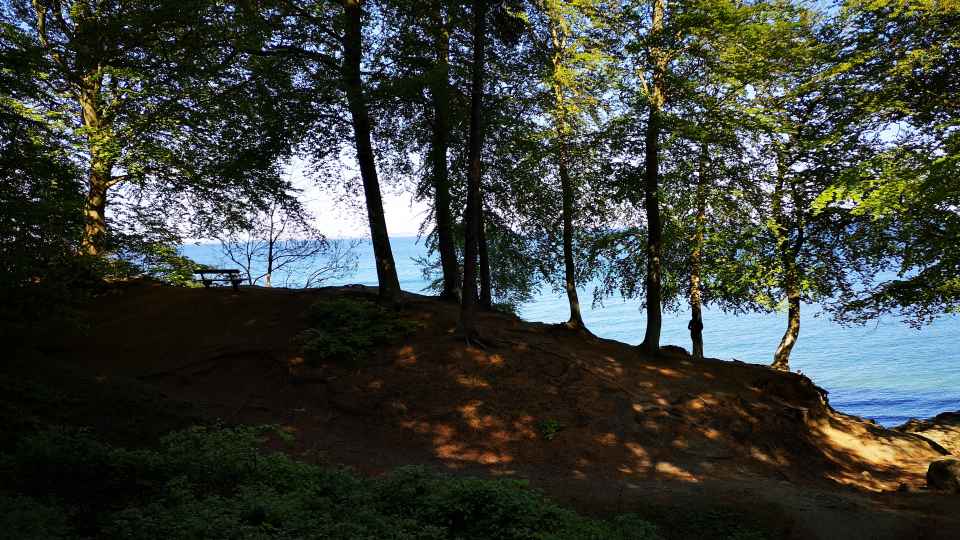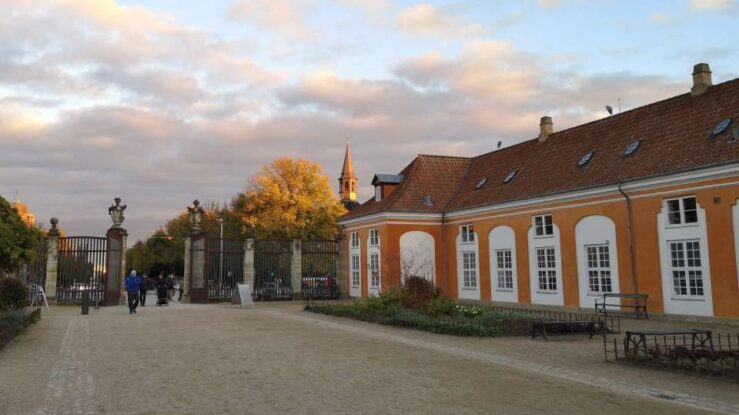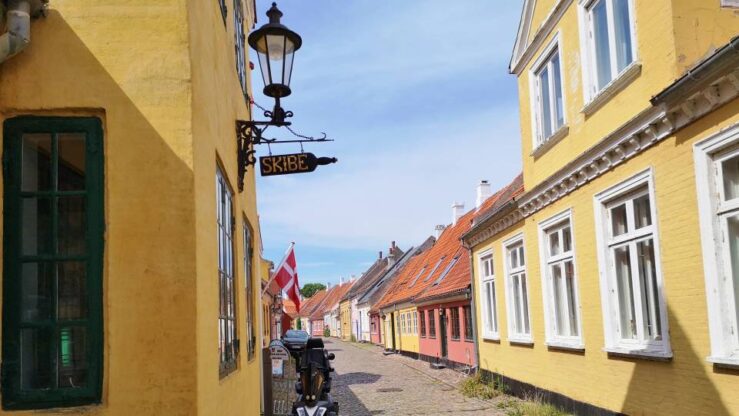Danish Viking Kings Still Play Around Moesgaard Museum
Aarhus is one of the oldest cities in Denmark and Scandinavia. Its history dates back to the 8th century when the first Vikings settled around the Aarhus River. The old word ‘Aros’ meant river mouth, and from this term, the current name of the city, Aarhus, developed. Settling along the river was ideal for the Danish Vikings since they could keep their Viking ships well protected from enemies, tucked away from the coastline.
For centuries, Aros was the location of a thriving Viking culture. What is quite unique is that the geographical location of the old Aros has been preserved as the location of the present-day modern city centre. Today, it is a flourishing place where students, curious tourists, and citizens blend and take part in the vibrant cultural life at the river cafés and other trendy, local establishments.
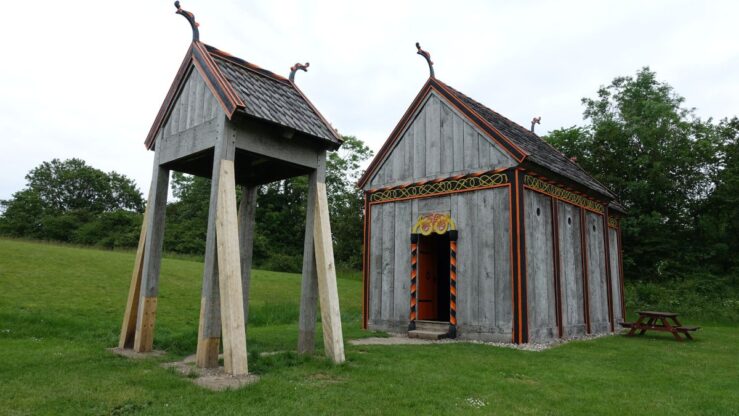
Moesgaard Museum has reconstructed a Viking stave church along Oldtidsstien | Photo: Travel In Culture
During the last decades, significant excavations have been undertaken on several Aarhus squares and streets, stunningly revealing that the Viking settlements are older than earlier assumed. The first settlements are now believed to date all back to the year 770.
Moesgaard Museum and the Viking Museum
The remparts and finds are exhibited at both Moesgaard Museum south of Aarhus and the Viking Museum situated in the basement of the Nordea Bank on the Skt. Clemens Square in central Aarhus. Recently, a Viking warrior has been excavated on a building site beneath the former city library. It was displayed in Moesgaard Museum in the spring of 2019, together with the permanent exhibition of runic stones and other Viking finds.
The Viking Museum Aarhus holds significant artefacts from the Viking Age found on the square just outside. It exhibits remains of the ramparts from central Aarhus. At the same time, the exhibition monitors an animation of a Viking attack taking place at the time of the old Aros. Also, an exact model city of Aarhus (in the year 980) under the reign of one of the Viking kings, Harold Bluetooth, is on display.
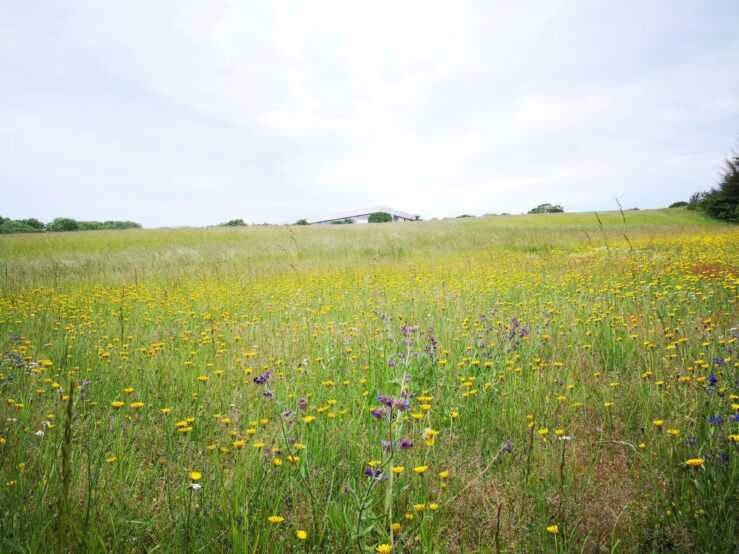
Flowering meadows around Moesgaard Museum south of Aarhus | Photo: Travel In Culture
The wild Viking kings
Throughout the years, Aros also became a convenient base for the renowned Viking raids out of Denmark. The Viking kings were fearless and set out to conquer new lands. They reached many parts of Europe, particularly England and Ireland, in search of wealth and power. On their way, they raided monasteries to get their treasures. Wherever they arrived, the violent seafarers were brutal and reckless. To a large extent, they defeated the people they encountered. Over time, the Viking kings conquered considerable land, even far away from Denmark, through raids.
It is hard to believe that the Viking kings and their people were so relentless when you look at their peaceful descendants in the streets of Aarhus today. The city is a small, active and modern metropolis, with a wealth of cultural activities, amiable people and a lively atmosphere. There are loads of popular restaurants and cafés along this same river, once chosen as the perfect site for the Aros Viking settlement.
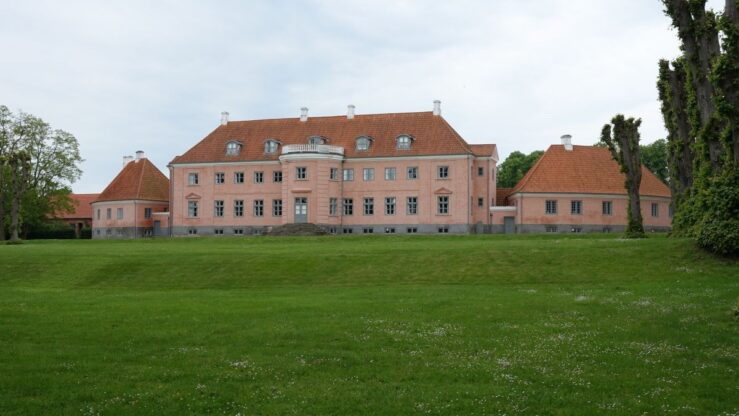
The Moesgaard Manor | Photo: Travel In Culture
Moesgaard surroundings and museum
Moving further south, we reach the hilly Skåde Bakker and Moesgaard grounds where the old manor Moesgaard still stands.
In 1970, it was converted into a museum featuring Danish history from the past by exhibiting Danish ethnological and archaeological artefacts and finds from ancient times. Among other things, it has several runic stones and bog bodies, with the most famous find being the Grauballe Man.
9 cultural spots in Aarhus
9 cultural spots in Copenhagen
3-day itinerary in Copenhagen
Oldtidsstien is a 4-kilometre (2.5-mile) prehistoric trail across fields, meadows, Ice Age landscape, forest, streams and Moesgaard Beach, established by the museum to take the visitors round to reconstructions from the past: prehistoric houses, dolmens and barrows as well as a Viking stave church ornamented with writhing serpents from around 1060, just at the transition to the Middle Ages. The medieval water mill, Skovmøllen at Giber Å, is sometimes applied as a granary mill. Also, an old fisherman’s house from 1856 is just next to the beach, one of the prime Aarhus beaches and a popular and favoured spot for the locals in summer.
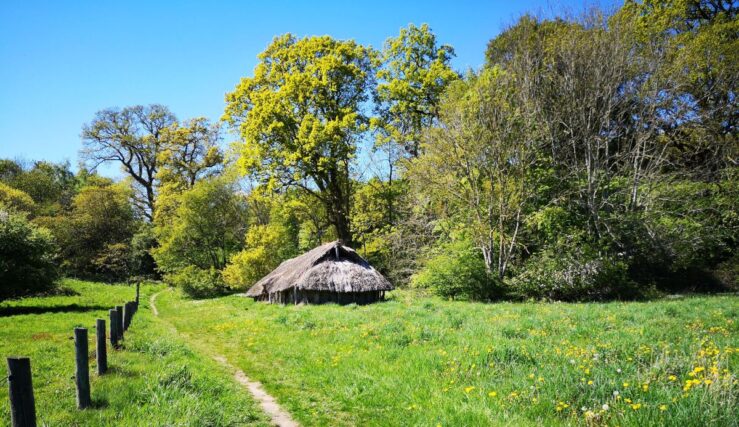
The prehistoric trail or Oldtidsstien passes by reconstructions of houses from the past | Photo: Travel In Culture
In 2013, Moesgaard Museum was moved to a new museum building – dug into the meadows of the old Moesgaard premises. It was designed by the Danish Henning Larsen Architects, supplied by Kristine Jensens Tegnestue for the landscape architecture and constructed by MT Højgaard. The roof is a grass lawn rising from the meadows until the far end of the fascinating construction. The museum has gained tremendous recognition, hosting numerous temporary exhibitions from near and far. Its exterior frames are perfect for private get-togethers and picnics on the sloping, green rooftop, for sledging in winter, for a refreshing spring Sunday walk along Oldtidsstien or as a trendy setting for a professional photo shoot.
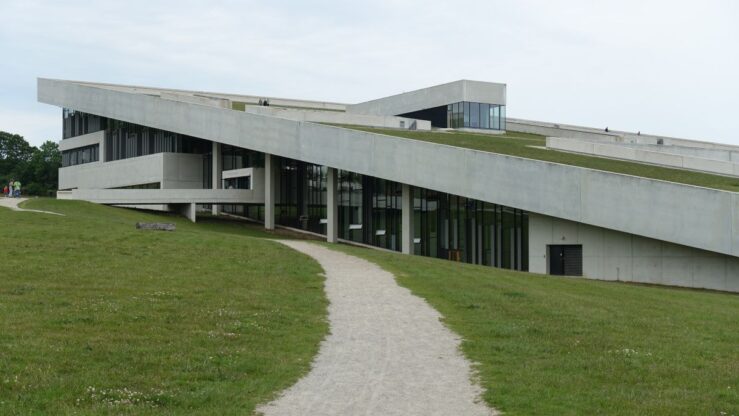
The new Moesgaard Museum rising from the green lawns | Photo: Travel In Culture
The Danish Vikings and the Viking kings
The forests and meadows in southern Aarhus are also today, central to understanding the Danish Viking kings and their history. In 2017, Copenhagen Royal Theatre performed an open-air Viking play with the Viking king Harald Bluetooth in the lead role. The setting was the Moesgaard Museum surroundings, exploiting the particular architectonical frames of the modern museum built into the green field. Shaped with an old Danish Viking ship as the stage and a universe of characters from the Viking age, it brought the Danish Vikings and Viking kings alive. The setting drew up an atmosphere of rough Viking raids and heroic sword battles, leaving the spectators with an enveloping sense of coarse Viking humour, as it once must have been.
Again, in the spring and early summer of 2019, another myth came alive in these same surroundings. The play King Arthur dramatically played out with a dragon, a wizard, queens, warriors, horses, and spectacular magic in the Moesgaard open-air setting. In 2022, Tolkien’s magical The Hobbit took place here – and in 2024, Ragnarok (Doom of the Gods in Norse mythology)!
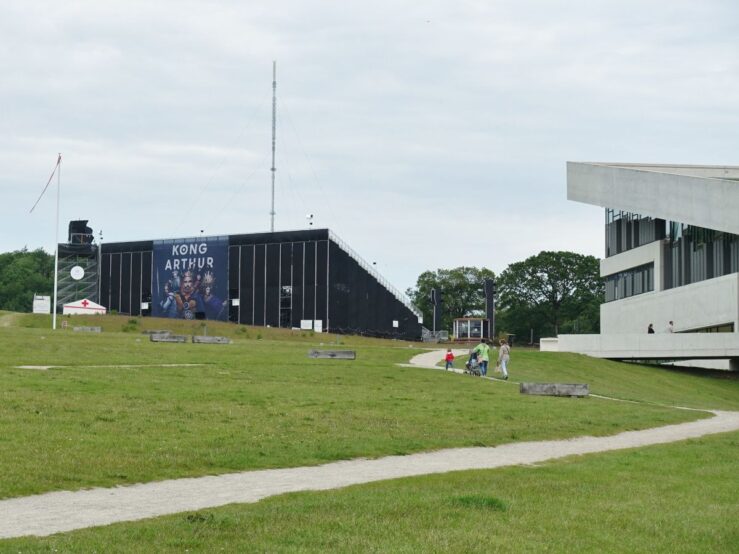
King Arthur is an open-air Viking play at Moesgaard Museum | Photo: Travel In Culture
The premises of the former Moesgaard manor and surrounding landscape, though, hide far more history than just the Viking period. In the Stone Age, there were settlements in the area, and they continued through the Bronze Age, Iron Age, and the centuries to follow. There are visible traces from all the periods around Moesgaard: grave mounds, dolmens, sunken roads and drystone walls. Several of the walls date back to Medieval times. Also, the 1700s straight line structures have influenced the landscape with still existing charming allees as access roads.
In recent times, one of the more interesting local sights is the remains of an ice cellar from the 18th century in the forest. Here, Moesgaard used to keep ice cut from nearby ponds in winter. In this way, the manor got its fridge in the forest where they could store food for many months during the year.
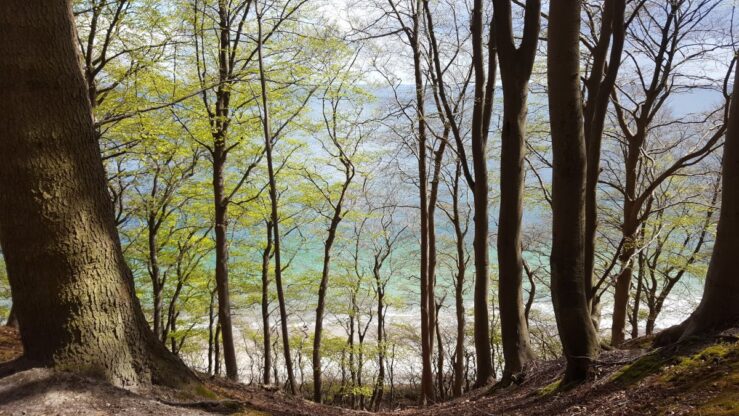
Moesgaard Museum – centre of Danish Vikings and Viking Kings | Photo: Travel In Culture
Occasionally, at other times of the year, you can also come across people participating in a Viking role-play around the Moesgaard Museum and forest. It is a favoured location for modern role-playing. The area around the museum is, with its beautiful nature, hills, forest, and beach, among the most popular places around Aarhus.
Every summer, Moesgaard is packed with modern Danish Vikings for a few days. The Moesgaard Viking Moot is an annual event, taking place since 1977, around the museum premises. In July, Vikings from around the world gather to participate in a gigantic battle of 500 warriors. The place abounds with Icelandic horses, Vikings dressed in convincing Viking costumes, merchants with authentic Viking crafts, jewellery, ceramics, beer, leatherwork etc. It is a most lively, enticing show and impressive battle when the Viking Age comes alive on the flower meadows and in the Moesgaard forest for this special occasion every year.
Read more about Aarhus: 9 Cultural Spots in Aarhus and Sightseeing in the Heart of Jutland
Read next: Visit Dybbøl Mill and Medieval Ribe at the Danish Wadden Sea
Find useful travel gear: Travel Essentials
Accommodation / Tours: Check Hotels, Tours & Activities
‘Danish Vikings & Viking Kings Around Moesgaard Museum’
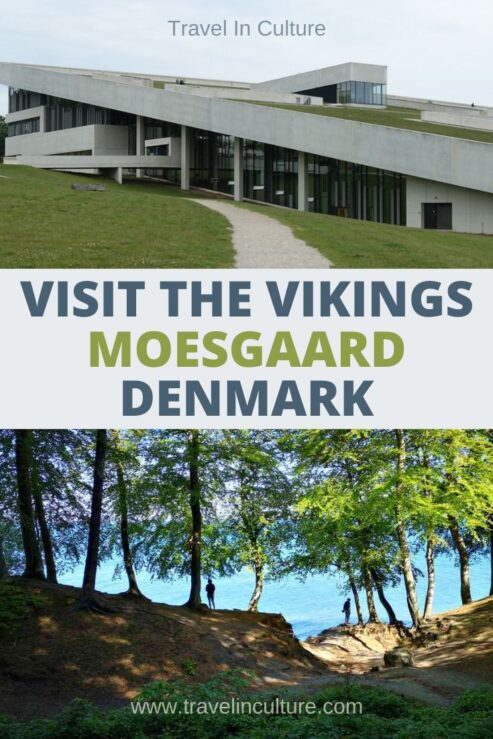
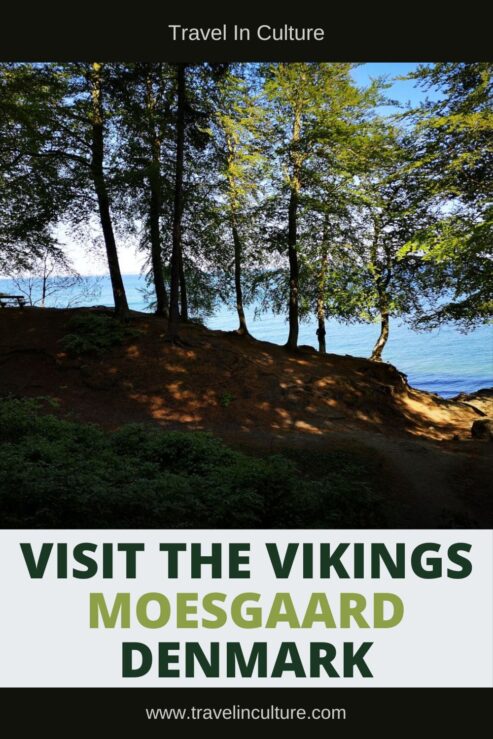
Moesgaard Museum – Danish Vikings and Viking Kings
Featured image of
Moesgaard Museum Viking Kings:
Travel In Culture


